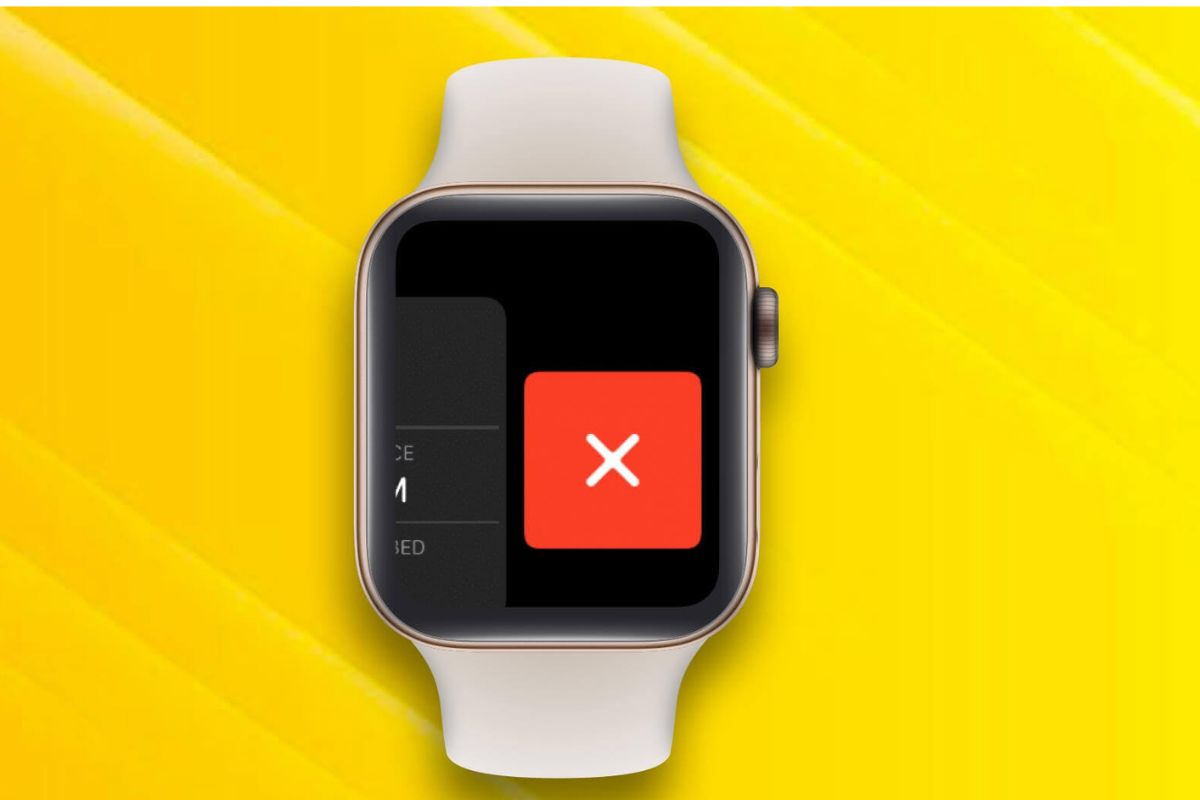Reasons to Close Apps on an Apple Watch
The Apple Watch is a powerful device that allows you to stay connected, track your fitness, and access various apps right from your wrist. However, just like any other device, it is important to manage and optimize the performance of the apps running on your Apple Watch. Closing apps when you’re not using them can help conserve battery life, improve the watch’s overall performance, and ensure a smooth user experience. Here are a few reasons why you should consider closing apps on your Apple Watch:
- Battery Life: One of the main benefits of closing apps on your Apple Watch is extending the battery life. Even when apps are minimized, they may still be running in the background and consuming power. By closing unused apps, you can maximize the battery efficiency and enjoy longer usage times.
- Performance: Closing apps can improve the performance of your Apple Watch. When multiple apps are running simultaneously, it can strain the device’s resources and slow down its responsiveness. By closing unnecessary apps, you free up memory and processing power, resulting in a smoother and snappier user experience.
- App Refresh: Closing apps can help facilitate a fresh start for the next time you use them. Sometimes, apps can encounter glitches or become unresponsive. By closing and reopening them, you give them a chance to reset and function properly.
- Memory Management: Closing apps optimizes memory usage on your Apple Watch. The device has limited RAM, and keeping too many apps open may lead to memory congestion. Closing unused apps ensures that resources are available for the apps you actively use, preventing slowdowns and potential crashes.
- Privacy and Security: By closing apps, you reduce the chance of sensitive information being accessed by unauthorized individuals. While Apple Watch apps are generally secure, closing them when not in use adds an extra layer of protection against potential breaches.
Now that you understand the benefits of closing apps on your Apple Watch, let’s explore various methods to close them efficiently.
Method 1: Using the Dock on Apple Watch
The Dock is a convenient feature on the Apple Watch that allows you to quickly access your favorite apps. It also provides an easy way to close apps that are currently running. Here’s how you can use the Dock to close apps on your Apple Watch:
- Press the button on the side of your Apple Watch to open the app view. This will display the apps that are currently running.
- Swipe left or right to navigate through the apps until you find the one you want to close.
- Once you have selected the app, swipe up on its card to close it. The app will disappear from the app view, indicating that it has been closed.
- Continue swiping left or right to close any other apps that you no longer need.
By using the Dock to close apps, you can efficiently manage the running apps on your Apple Watch and improve its overall performance. Remember to only close the apps that you are not currently using to conserve battery life and resources.
Method 2: Using the App Switcher on Apple Watch
Another method to close apps on your Apple Watch is by using the app switcher. The app switcher allows you to quickly switch between recently used apps, and it also provides a way to close them. Follow these steps to close apps using the app switcher:
- Press the side button on your Apple Watch to access the app switcher. This will display a horizontal list of the recently used apps.
- Swipe left or right to navigate through the apps until you find the one you want to close.
- Once you have selected the app, swipe up on its card to close it. The app card will disappear from the app switcher, indicating that it has been closed.
- Continue swiping left or right to close any other apps that you no longer need.
Using the app switcher gives you a quick and efficient way to manage and close apps on your Apple Watch. Make sure to close the apps that you are not actively using in order to optimize performance and preserve battery life.
Method 3: Using the iPhone Companion App
The iPhone companion app is a handy tool that allows you to customize and manage various settings on your Apple Watch. It also provides a way to close apps on your Apple Watch directly from your iPhone. Here’s how you can use the iPhone companion app to close apps:
- Open the Apple Watch app on your iPhone.
- Navigate to the “My Watch” tab at the bottom of the screen.
- Scroll down and tap on the “Background App Refresh” option.
- On this screen, you will see a list of apps that have recently been used on your Apple Watch. Toggle off the switch next to any app that you want to close.
- Once you have disabled the background refresh for the desired apps, they will no longer run in the background on your Apple Watch.
By using the iPhone companion app to disable background app refresh, you can effectively close apps that you no longer need on your Apple Watch. This helps improve performance, conserve battery life, and ensure a smoother user experience.
Method 4: Restarting the Apple Watch
If you’re experiencing issues with your Apple Watch or simply want to ensure a fresh start, you can close all apps and restart the device. Restarting the Apple Watch can help resolve any app-related glitches and clear the device’s memory. Here’s how you can restart your Apple Watch:
- Press and hold the side button of your Apple Watch until the Power Off slider appears on the screen.
- Drag the Power Off slider to the right, and your Apple Watch will begin shutting down.
- Once the watch is completely turned off, press and hold the side button again until the Apple logo appears on the screen.
- Release the side button, and your Apple Watch will start powering up.
- Once the Apple Watch has restarted, all apps will be closed, and the device will be refreshed.
Restarting the Apple Watch is a simple yet effective method for closing all apps and giving your device a clean slate. It can help optimize performance, resolve any lingering issues, and ensure a smoother user experience.
Remember to use this method sparingly when needed and not as a regular practice, as restarting your Apple Watch will also close any apps that you may want to keep running in the background.
Tips for Optimizing App Performance on Apple Watch
To ensure the best performance and maximize the user experience on your Apple Watch, here are some helpful tips for optimizing app performance:
- Close Unnecessary Apps: As mentioned earlier, closing apps that you’re not actively using can free up resources and improve performance. Get into the habit of regularly closing apps on your Apple Watch to conserve battery life and enhance responsiveness.
- Limit Background App Refresh: Disable background app refresh for apps that don’t require constant updates. This will prevent them from running in the background and consuming unnecessary resources. Adjust these settings in the iPhone companion app under the “Background App Refresh” section.
- Manage App Notifications: Review your app notification settings and disable notifications for apps that aren’t critical. Managing notifications can help reduce interruptions and improve overall app performance on your Apple Watch.
- Keep Software Updated: Ensure that your Apple Watch is running the latest software version. Software updates often include bug fixes, performance enhancements, and new features that can optimize app performance.
- Clear App Cache: Some apps may store cached data on your Apple Watch, which can consume storage space and impact performance. To clear app cache, uninstall and reinstall specific apps from the iPhone companion app.
- Avoid Overloading Watch Faces: Be mindful of the complications and features you add to your watch face. Too many complications or data-intensive watch faces can strain resources and slow down app performance. Choose the features that are most important to you and prioritize them.
- Manage Storage: Regularly check the storage usage on your Apple Watch and delete any unnecessary apps or data. This will help optimize storage space and improve app performance.
- Reset the Apple Watch: If you’re experiencing persistent performance issues, you can consider resetting your Apple Watch. This should be done as a last resort and will restore your device to its factory settings. Remember to backup your data before performing a reset.
By following these tips, you can optimize app performance on your Apple Watch, ensuring a smoother and more enjoyable user experience. Remember that maintaining a clutter-free and well-managed device is key to getting the most out of your Apple Watch.


